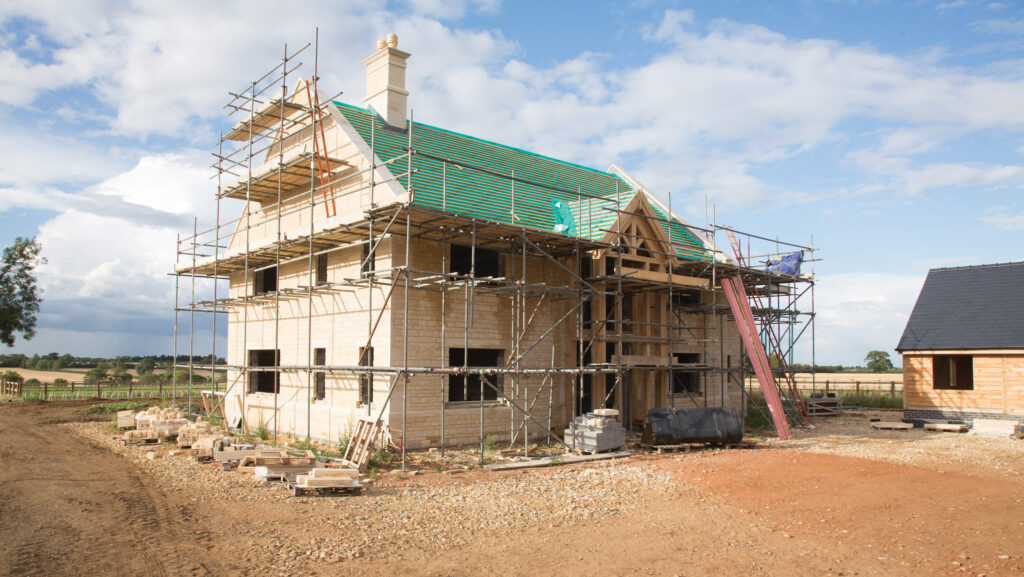Planning conditions: What they are and why they matter
 © Tim Scrivener
© Tim Scrivener Planning conditions can be a mixed blessing, but making sure they are properly discharged or varied correctly is important.
The imposition of planning conditions allows development that wouldn’t otherwise be permitted to proceed.
However, some conditions are so minor that the process of discharging them wouldn’t be considered an imposition.
See also: On farm developments – advice on planning consent approval
In fact, most planning consents will generally include a few conditions, points out Henry Doble of rural planning specialist Acorus.
“You might have a couple of standard conditions that don’t require you to really do anything.
“They could just say you’ve got to implement the development in accordance with the plan submitted, and that the development has to be commenced within a specific timeframe.
“And there might be a condition that underpins the use, based on whatever it is that you’ve applied for,” says Henry.
The six tests
Paragraph 55 of the National Planning Policy Framework makes clear that planning conditions should be kept to a minimum, and only used where they satisfy the following tests, They must be:
- Necessary
- Relevant to planning
- Relevant to the development to be permitted
- Enforceable
- Precise
- Reasonable in all other respects.
More onerous conditions relate to agricultural occupancy, landscaping, drainage and, increasingly, biodiversity net gain (BNG) stipulations.
“What you have to do to meet your biodiversity net gain will be conditioned. And this is a big area at the moment, because it is quite an involved process.”
The use of conditions can help speed up the planning process and minimise upfront costs, says Henry.
“Applicants can park a lot of the detail until they know that they’ve got consent.” However, discharging conditions can be a difficult process, he warns.
“Some conditions can be more involved than the planning application itself.
For example, you might apply for a relatively simple agricultural building like a large grain store and find yourself, for whatever reason, with quite a detailed condition relating to drainage.”

Permission for farm accommodation may come with an occupancy condition © Tim Scrivener
Other conditions require action prior to the development taking place. These pre-commencement conditions commonly include confirming details of building materials with the local authority.
“If you’ve just said at the planning stage you are going to be using tin cladding, they might want to know exactly what colour it is going to be,” Henry says.
Sometimes conditions for certain types of development, like a solar farm, seem to be templated by local authorities, he notes.
“You can end up having to spend the same amount of money on a half-acre site as you would on a 100-acre site.”
Testing conditions
However, planning authorities are not allowed to apply conditions for the sake of it.
“They can’t ask you to do things that would prevent development.” For example, an authority couldn’t specify an ecology report as one of the conditions and then refuse consent based on the results of that report.
“All conditions have to meet six tests. If they don’t meet those tests, that can be grounds for removal later on,” says Henry.
If you are unhappy with the conditions attached to a planning consent, one option is to appeal the entire consent, although this could have unintended consequences, he warns.
“The downside is that it would go to the planning inspectorate, and they can assess the whole scheme again. So, you could go from having an approval to actually being refused.”
Scope to vary conditions
“Normally, what we would say to people is get your consent. If you don’t agree with one or two of the conditions, then have that argument later.
“When you have your permission, there is scope to go back and apply to vary or remove any condition.”
With some conditions that require information to be supplied to the planning authorities before development commences, there is also scope to discharge a condition by default, says Henry.
“If you supply the required information six weeks before development commences, you can serve a deemed discharge notice.
“This effectively says that if the authority doesn’t respond within 14 days, thus reaching the eight-week time limit that condition discharges have, then you basically have it by default.”
If, for whatever reason, a condition is not discharged within 10 years and a local authority fails to take any action, it becomes lawful by default, but Henry doesn’t advise taking that chance.
“Obviously, the advice is that you do get your conditions sorted to prevent any problems later on.”
Failure to satisfy pre-commencement conditions technically means your development is unlawful.
“If you’ve had to do a number of things before you start your development, and you haven’t, your development technically doesn’t have planning permission,” says Henry.
“That is obviously a risk, because they could come along and tell you to take it down again. However, that’s quite unlikely, because they would have granted you permission for it.”
Compliance issues
- Local authorities can take enforcement action against those who fail to comply with planning conditions. This could include serving a notice requiring any breach to be rectified, making somebody reapply for consent, or even legal proceedings
- In the case of persistent or serious breaches, prosecution is an option
- It’s also worth bearing in mind that it could be much harder to sell a property or take out a loan against it if there are planning conditions that haven’t been discharged.
Change of use
A common reason to want to vary a condition is change of use.
“Recently, a lot of use classes have been lumped together as Class E, whereas before you had separate classes for office, light industrial, retail and the like,” says Henry.
“What we’re seeing more and more when you apply for consent for a commercial development is that they will try and condition it as tightly as possible to your proposed use.
“Otherwise, if you’ve got permission for a Class E use, the building could be a shop, it could be a restaurant, or it could be an office without applying for planning permission again.”
If you want to change the use – if a tenant, for example, leaves and their replacement wants to run a different type of business – it means going back to the planning authority and going through the application process again to get the condition varied.
“Often, it’s a formality, but the local authority will want to assess what impact any change might have.
“Generally, it’s to do with highways and whether there will be more traffic from the new use, particularly on narrow country lanes.
“You would need to provide evidence why it was a suitable location with appropriate details, such as a highways assessment.
“A strong economic argument, such as creating more jobs, is usually a good starting point when attempting to vary a condition.”
